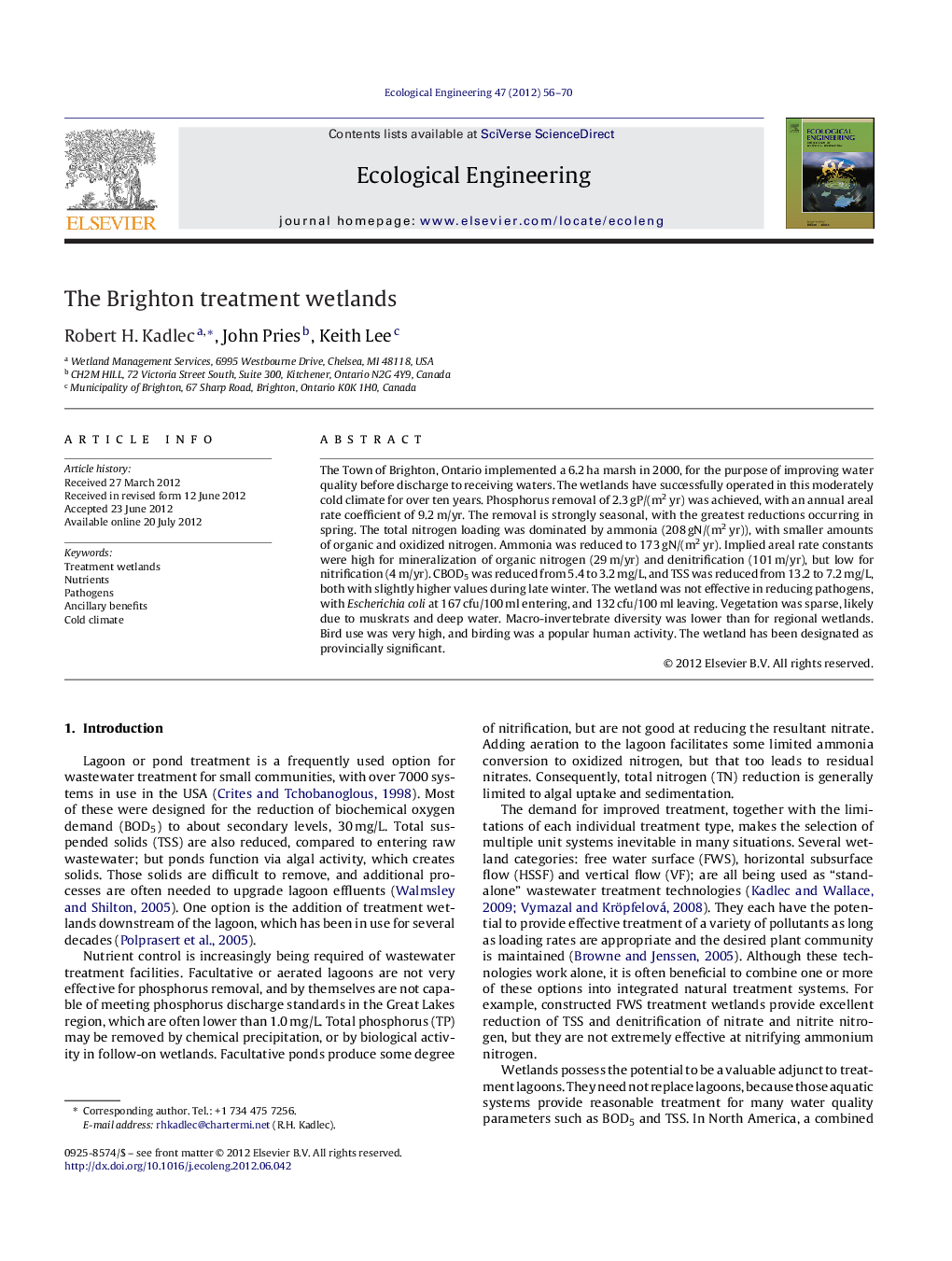| Article ID | Journal | Published Year | Pages | File Type |
|---|---|---|---|---|
| 4389999 | Ecological Engineering | 2012 | 15 Pages |
Abstract
The Town of Brighton, Ontario implemented a 6.2Â ha marsh in 2000, for the purpose of improving water quality before discharge to receiving waters. The wetlands have successfully operated in this moderately cold climate for over ten years. Phosphorus removal of 2.3Â gP/(m2Â yr) was achieved, with an annual areal rate coefficient of 9.2Â m/yr. The removal is strongly seasonal, with the greatest reductions occurring in spring. The total nitrogen loading was dominated by ammonia (208Â gN/(m2Â yr)), with smaller amounts of organic and oxidized nitrogen. Ammonia was reduced to 173Â gN/(m2Â yr). Implied areal rate constants were high for mineralization of organic nitrogen (29Â m/yr) and denitrification (101Â m/yr), but low for nitrification (4Â m/yr). CBOD5 was reduced from 5.4 to 3.2Â mg/L, and TSS was reduced from 13.2 to 7.2Â mg/L, both with slightly higher values during late winter. The wetland was not effective in reducing pathogens, with Escherichia coli at 167Â cfu/100Â ml entering, and 132Â cfu/100Â ml leaving. Vegetation was sparse, likely due to muskrats and deep water. Macro-invertebrate diversity was lower than for regional wetlands. Bird use was very high, and birding was a popular human activity. The wetland has been designated as provincially significant.
Related Topics
Life Sciences
Agricultural and Biological Sciences
Ecology, Evolution, Behavior and Systematics
Authors
Robert H. Kadlec, John Pries, Keith Lee,
